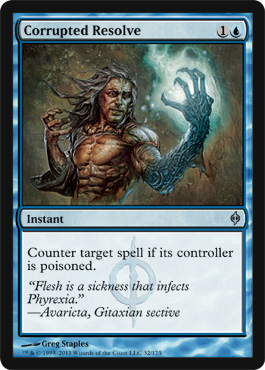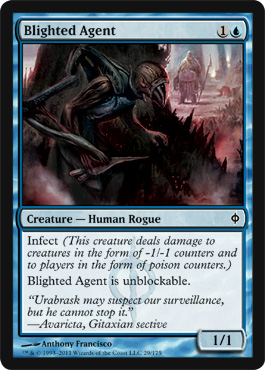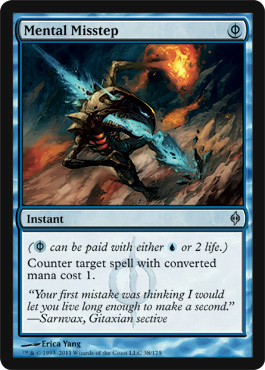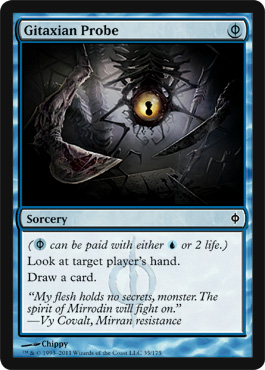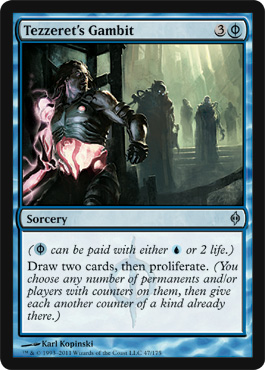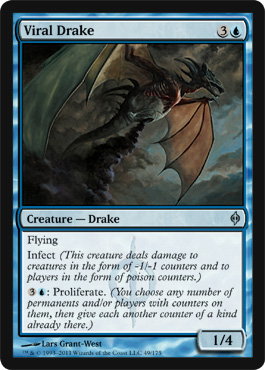Hello hello hello! Welcome back. Now that I have officially undertaken my first week of college, I am ready to get back to blogging. Financial aid gave me six different kinds of Hell, and so did my immunization records. So, I did wind up skipping my last post because I couldn't find time to get anything together on a subject.
So, because it's something that has come up in multiple discussions, I've going to go through the steps to getting VirtualBox OSE to work with Linux, and from there, getting OCTGN installed and ready on your Windows system.
Getting VBOSE To Run Windows On Your Ubunutu Computer!*
*If you don't use Ubuntu, then this obviously isn't for you. If you're using another Linux Distribution life Debian, Fedora, or openSUSE, then you can find the direct download on their Linux Download Page. If you're using a Mac, then I'm sorry, firstly. Secondly, consider Boot Camp.
For this next part, I like to move to an empty workspace. Make sure you minimize system activity while VBOSE is running. Open it up under Accessories (under Applications). Now, I've already installed it, but what you'll be looking at will look kinda like this.
Now you won't have a machine loaded yet. So, we'll need to make a new one! Lets hit that big blue button up there to start.
Obviously, for our purposes here, we'll call it example. Now we will need the Windows XP .iso image to do this, but if you don't have one yet, fear not. We can still setup the virtual machine and come back later to add the IDE Controller. Which is to say, our Operating System.
The rest of this may or may not be obvious to everyone, so I'm going to include visual aids anyway.
Essentially, you'll almost always just want a Dynamic Storage drive. Unless you have concerns about file size or disk space for your host, then I will always recommend using it. You'll never take up more space than you need.
Now, I like to download all the files first, but thats a matter of preference. But I prefer it because I find it easier. And becuase of this, I'm going to walk us through this first. If you already have OCTGN installed, then thats fine.
So, because it's something that has come up in multiple discussions, I've going to go through the steps to getting VirtualBox OSE to work with Linux, and from there, getting OCTGN installed and ready on your Windows system.
*If you don't use Ubuntu, then this obviously isn't for you. If you're using another Linux Distribution life Debian, Fedora, or openSUSE, then you can find the direct download on their Linux Download Page. If you're using a Mac, then I'm sorry, firstly. Secondly, consider Boot Camp.
A quick explanation on what an Operating System Emulator is and does is required. Basically, it creates an isolated environment that makes the guest OS think its on it's own computer. So you can use this "virtual machine" to run Linux inside Windows, Windows inside Linux, Mac OS in Window or Linux, etc, etc. We'll be look at Windows XP in Ubuntu 10.10 or 11.04.
Ok, so first thing first. Because I have so many repositories in my Software Center these days, I can't remember if Canonical loads VirtualBox. I do know that they do not update it however. So just run a preliminary search for it in your Software Center (SWC), and if nothing comes up we're going to the Linux Download Page to get the .deb file. The great thing about deb files is that they will automatically load and compile in your SWC, and it should install momentarily. Congrats! That was what we call "the easy part".For this next part, I like to move to an empty workspace. Make sure you minimize system activity while VBOSE is running. Open it up under Accessories (under Applications). Now, I've already installed it, but what you'll be looking at will look kinda like this.
Now you won't have a machine loaded yet. So, we'll need to make a new one! Lets hit that big blue button up there to start.
Our next step is selecting our RAM allocation. As you can see here, I have 4GB of RAM, and I'm allocating 2GB to the machine. Keep in mind that this is going to be running PARALLEL to your host system. This means two things: First, if you want your VB to do anything with any haste, you'll need at least 1.5GB of RAM; Second, You'll need to have 2GB of RAM open anytime you're using the VB, or else the machine AND your host will run slow and may lock you out until it can resolve everything. The easiest way to avoid this is to simply make sure you close other programs.
You'll have no choice the first time. You have to create a new Virtual Drive for your Virtual Box.
You'll start out with a minimum file size of 4 MB. Because of issues with initially opening and installing Windows, use at least 2 GB. You can save your storage anywhere you like, but by default it goes to a hidden folder in your home directory.
Great! After a few more confirming clicks you'll be done! You now have an almost functional machine! The only thing left is actually having the disk file with Windows on it.
There are tons of places to get XP images, and all are perfectly legitimate torrents. You'll still need an access code from a legal copy of XP. Unless you have the Corporate version, which requires no key or authentication. I don't really care what you use and how, and please, don't tell me. But this next part is really simple, and I'm going to assume one way or another that you got one.
From your newly created machine, go to Settings. Under Storage, this is what you should see. The highlighted area will initially say Empty. Next to the CD/DVD Device dropdown menu, use the Directory Selection to find your .iso image and select it. Your iso is then what we call "mounted".
When you start up your machine, it'll boot just like a Windows Computer! Make sure you hit F12 so you can select your boot device. Select your "CD" and you will be on your way!
CAUTION: When formatting your hard drive in the windows setup, ALWAYS, ALWAYS, ALWAYS format to FAT32! If you don't, you may format your entire drive, not just the pseudo-partition we created with the setup wizard. Why? I don't quite know, but it happens on occasion. Also, we need cross platform compatibility for our Shared Folder in a moment.
Once you're done with that, there is one more thing we want to setup in advance. Make your OCTGN folder. Make it anywhere. But make a dedicated folder for it. Now, go back to the Settings for your machine and go to Shared Folders. Use the directory tool to select your new folder.
It should look like this:
Make sure its a Machine Folder and not a Temporary Folder. Otherwise, it won't be there when we try to install OCTGN.
Installing OCTGN on a Windows Machine
This is actually pretty easy, especially if you prepare for it properly.
The first thing we'll need to get a download manager. Pretty much everyone I know is using Firefox, so I'll suggest a sweet little Add-On I used that makes this process MUCH easier. Its called DownThemAll. If you aren't using Firefox, then I don't really know what to tell you. We'll be working with a large number of files at a time, so setting them up with a manager makes things go much, much smoother. Google possible solutions is the best I can tell you.
Next, we will need Microsoft .NET 4 Framework support. That link will give you the download site. Its completely free, and as close to Open Source as Microsoft has ever come. Unfortunately, this is the base for OCTGN, so there isn't yet a way around this. Make sure you do this part from IE or Firefox in your Virtual Machine, not your Linux host machine, if your using that.
After we install .NET 4, then we're ready to get our program, yay!
Now, I like to download all the files first, but thats a matter of preference. But I prefer it because I find it easier. And becuase of this, I'm going to walk us through this first. If you already have OCTGN installed, then thats fine.
There are two kinds of files with OCTGN, .o8s and .o8g files. The .o8s is a "set definition", which is a collection of card files in a set. It can be an expansion, an auxillary product, or even just a collection of promos of a certin kind. there are quite a few of these, hence the need to use a manager. You can find all of them right here on the OCTGN freeforums. Just open up DownThemAll and check off the set files. I suggest just getting all of them at once, in case someone decides to use a promo or older version for style points. Or in case you decide lter you want to try a different format like Legacy, Modern, or Commander. Make sure they all go into your new folder for OCTGN. As of the day I post this, all of these are up to date and shouldn't need patching.
Next is the .o8g file, or "game definition" for MTG. This page is important! You'll need both the Game Definition file and the Markers file. This page also has a nifty little keyboard shortcut and mouse action guide, to help you get familiar without having to experiment with right clicking too much. Also put this into your new OCTGN folder.
Ok, so we hve the necessary files, and us Ubunutu users have VBOSE up, running, and ready for action. The rest is easy. I know most of you will be rushing to the octgn.net site, but don't. We don't use that anymore, as we have a newer version on Skylabs that eliminates the need for a third-party VPN program called Hamachi (available as a back-end program on linux as well, with a front-end called Haguichi). This one includes a Lobby that will do all of your networking for you. I still suggest using the IRC chatroom to coordinate and meet new players, but I'll get into that next week. Here's the link for the newer version.
Once you get that installed, it should open up automatically. This shouldn't require visual aids, so I won't use them. Also, I'm typic from outside my Programming Lab, so I can't at the moment. Sorry. Maybe I'll come ack with them later, so ask if you need them. But anyways, the obvious choice is to go to Manage Installed Games.
You'll see two windows here: Installed Games and Card Sets. Upload a Game definition file (your MTG Game Def you downloaded earlier). Then once you've done that, add sets. You can add them all at once, and it'll go through them one by one and install them. For the number of files being processed, its fairly quick. Make sure you load the Markers file as a set. This is what lets you add things like Charge counters, Time Counters, Loyatly counters, and every other kind of counter you'll require.
Congratulations! You are ready to roll! Make your deck, and find someone to play with!
Until next time, happy dueling, Planeswalkers!








